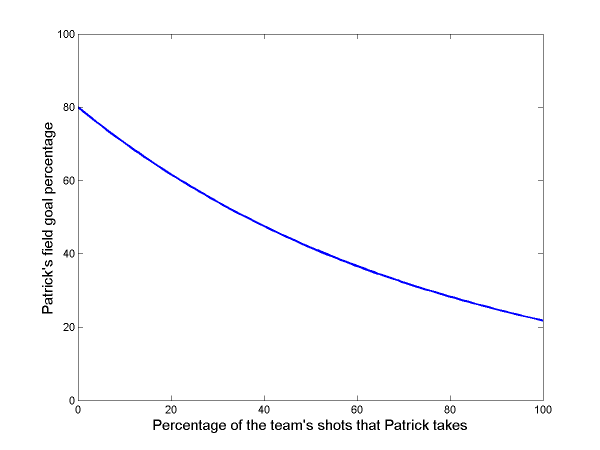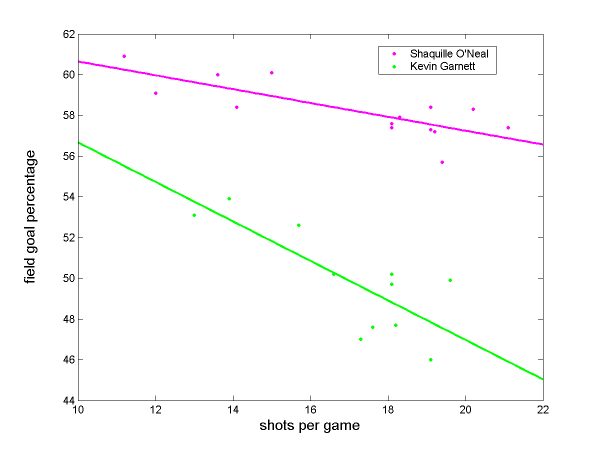Braess’s Paradox in Basketball: The Ewing Theory
In the mid-90s, ESPN analyst Bill Simmons and his close friend Dave Cirilli made a pretty surprising observation: the New York Knicks seemed to play much better when their superstar center, Patrick Ewing, was out with either an injury or some type of foul trouble. In a 2001 ESPN.com article, Simmons describes what he considers is the best example of the Ewing Theory at play. During Game 2 of the 1999 Eastern final playoffs, the Knicks lost Ewing to an Achilles tendon injury, and all hope seemed lost for the Knicks. However, in an unseen turn of events, the Knicks won three of next four games, beating the Indiana Pacers, and advancing to the Finals. This strange and counterintuitive observation is very related to Braess’s Paradox that was described in class.
Braess’s Paradox is statement that offers an explanation for why sometimes closing roads and routes can lead to shorter travel times, and inversely, adding new routes can lead to longer commutes. Although highways and roads are vastly different than three pointers and layups, much can be said when comparing the underlying game theory and network effects of the two. In an article by Brian Skinner, a physicist at the University of Minnesota in Minneapolis, these comparisons are highlighted. The step in making a connection between basketball and highways is to think of each possession as a “journey” in which the ball can take many different routes (plays) but that will eventually lead to a shot attempt, much like how a journey on a road ends with a destination.
As we discussed in class, the Nash equilibrium in penalty kicks for a player does not consist of playing his or her strongest strategy every turn. Similarly in basketball, even the best player does not take the team’s every shot. The more shots he/she takes, the less efficient the player’s shots become and the more the defense adjusts to defending the player. Even though Patrick Ewing was the best player on the Knicks, his teammates still took a significant fraction of the shots. The following plot (top) demonstrates an estimate of how Ewing’s performance may be affected according to the percentage of the team’s shots that he takes for the team. Although this graph is only an estimate, it shows that clearly a player’s capacity to consistently make shots greatly decreases as the number of shots increases. Additionally, the bottom plot demonstrates real life data supporting this statement. The purple and green lines represent the percentage of shots made over the total shots per game for Shaquille O’Neal and Kevin Garnett, respectively, throughout multiple seasons in their careers. As you can see, as more shots are taken, the percentage of shots made is noticeably lower.


So how does this explain the Ewing Theory? In the following graph, we get the complete picture of the whole team. Although it is also an estimate, it represents a pretty good approximation of the percentage of shots that are made depending on the percentage of those shots that are taken by Ewing. Clearly, the team’s average is highest when the best player takes about 20% of the shots, leaving the rest of his teammates to contribute almost evenly. As the article states, giving the best player less opportunities leads to him or her to be guarded more poorly, which can payoff in a higher percentage of shots made. This graph offers another important take away — since the best strategy for the team is to play the best player 20% of the time, this leaves 80% of the time for his other more “average” teammates to take shots. Additionally, we see that if the percentage of the best player’s shots goes down to 0% (injured or out), the team’s average remains very close to the original average. If 100% of the plays are left to the more average players, we see more sharing of the ball amongst the five, which also leads to a less organized defense that needs to deal with all five teammates playing the ball equally.

In conclusion, the Ewing Theory is real life observation that can be justified to a certain extent by the use of game theory and the understanding of Braess’s Paradox. Although alot of Skinner’s article was based highly on estimates and approximations, the takeaways are clear and show that this game theory model can be applied to more than just roads and highways. The implications of these observations and the fact that these conclusions c an be very accurate and can represent real life events begs the question: should more sports teams invest in game theory to develop better game plans, or should sports purely be left to athleticism?
Bill Simmons’s 2001 ESPN article on the Ewing Theory
Blog post on Braess’s Paradox and Ewing Theory
